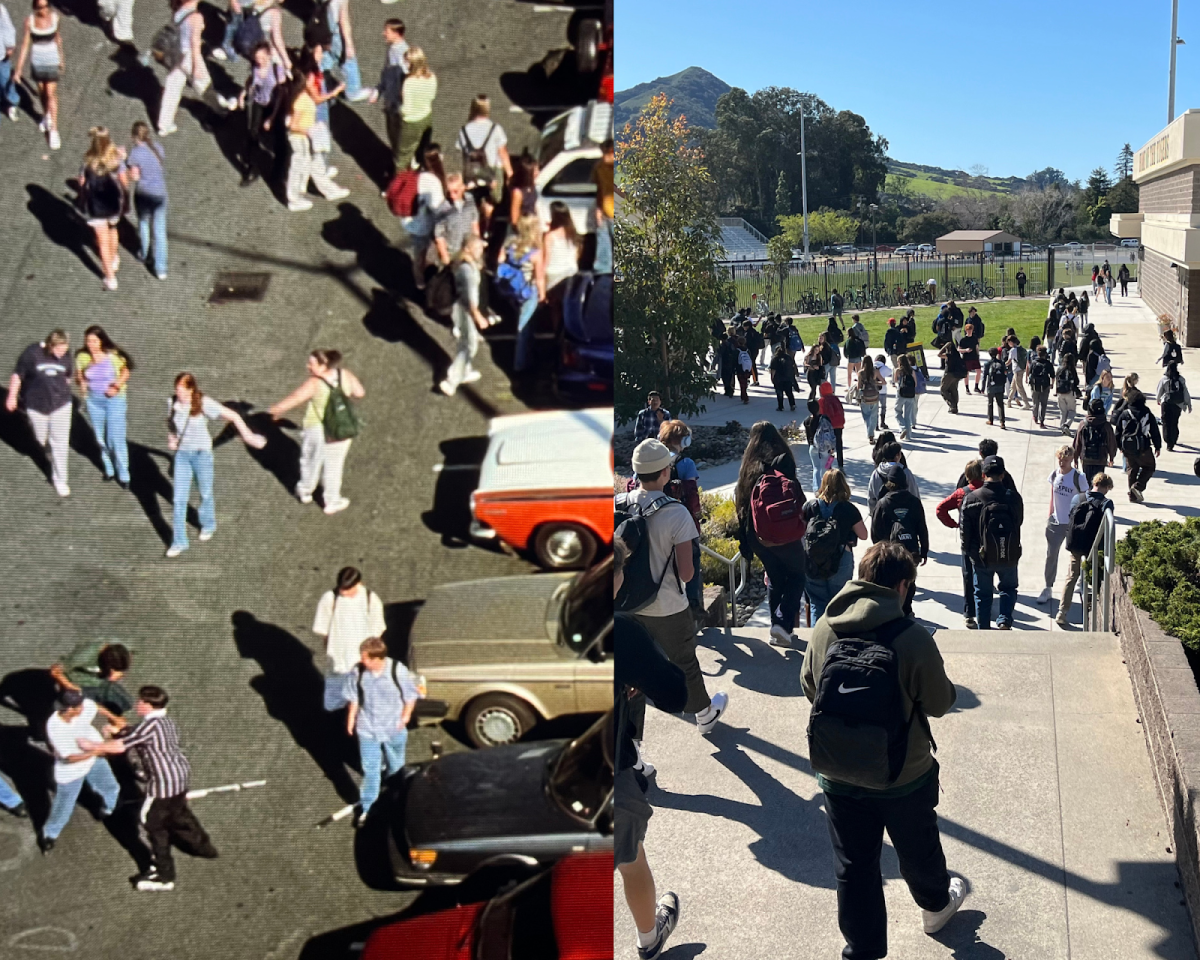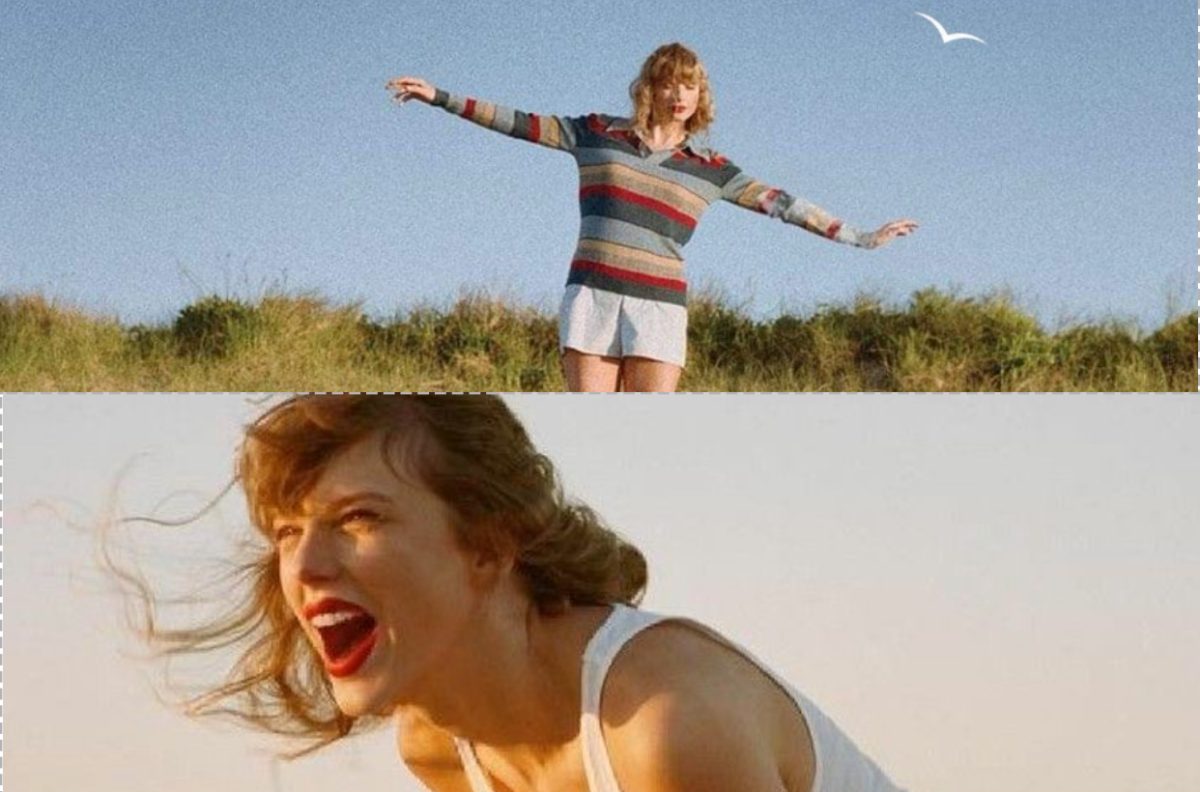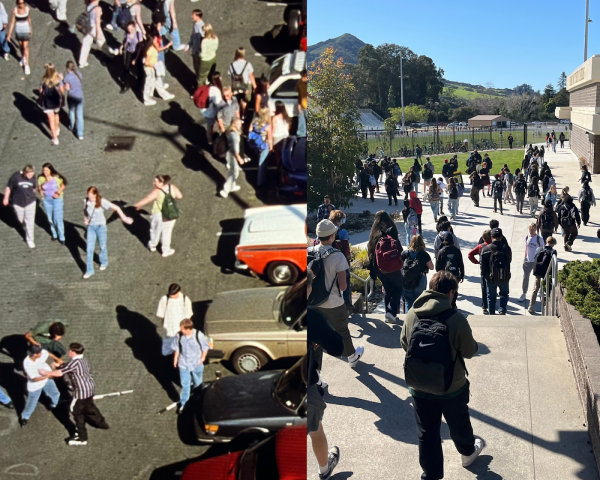Photo courtesy of senior Etienne Brennan
The fashion industry is one of the greatest contributors to climate change, and shopping sustainably may be the solution.
Many San Luis Obispo High School students like to spend their free time at the Goodwill Outlet, more commonly known as the bins. Goodwill is a nonprofit organization that supplies used items, primarily clothing. Teens enjoy finding unique clothing items. Not only can students kiss goodbye the overpriced, low quality clothing from large, unsustainable companies, they can feel good about the choices they are making as they no longer contribute to the fast fashion industry.
“I feel less guilty buying from thrift stores because I know that I am not contributing to companies that underpay, contribute to the massive amounts of greenhouse gas emissions, and waste natural resources” said junior Makena Johnson.
Although it may be tempting to purchase from companies like Urban Outfitters, Zara or H&M, the fast fashion industry’s production of clothing is a major contributor to a pressing global issue: climate change.
Consumerism in America is extremely high, as many feel that the more product they have, the better off they are, regardless of quality or the environmental consequences. Many consumers are fixated on the present; their impulse purchases are made with no regard to our future. Although some find satisfaction in purchasing something new, existing in a sustainable world is more rewarding.
The fashion industry goes through seasons, overproducing by 30-40% each time. This contributes to 10% of global carbon emissions. Overproduction from the fashion industry is also the second worst cause of water and plastic pollution in the world. The plastic fibers in clothes add to microplastic pollution. This harms marine wildlife and contributes to climate change.
85% of clothing thrown away in the United States ends up in the landfill or getting burned. The average American throws away 81 pounds of clothing a year. These statistics prove that we over consume and overproduce, an endless cycle of environmental torture.
Some argue that shopping sustainably is too expensive and unrealistic for their lifestyle. Although there are some sustainable companies that produce costly items, thrifting is one of the least expensive ways to boost one’s wardrobe.
“I enjoy thrifting because it’s a cheap alternative to in store shopping and has a lot of environmental benefits,” said junior Nico di Santo.
The solution to enormous textile waste is to reduce consumption as a whole. Buying secondhand is the most sustainable way to continue consuming clothing.
It’s not possible to control every part of the cycle of the fashion industry individually, but what we can do is control one step. We can stop purchasing new clothing from unsustainable brands. The industry creates major problems for the world such as environmental damage in manufacturing, worker exploitation, and fashion waste. Making the choice to shop sustainably will help end this vicious cycle.
If we don’t fall victim to the fashion industry’s corporate marketing, we can develop alternative methods of generating creative, user-driven fashion cycles.
Next time you make a purchase from a known fast fashion company, recognize that they will continue to produce as they feed off of consumers like you.
Source: calpirg.org













































